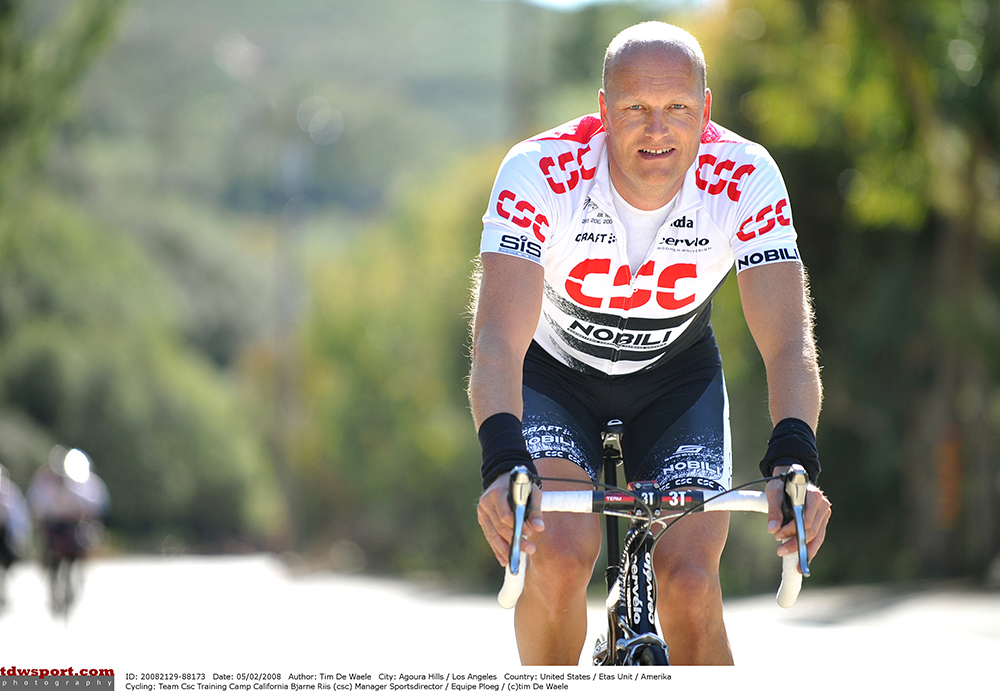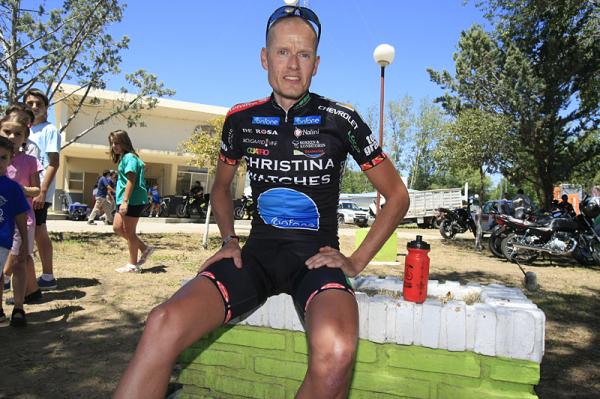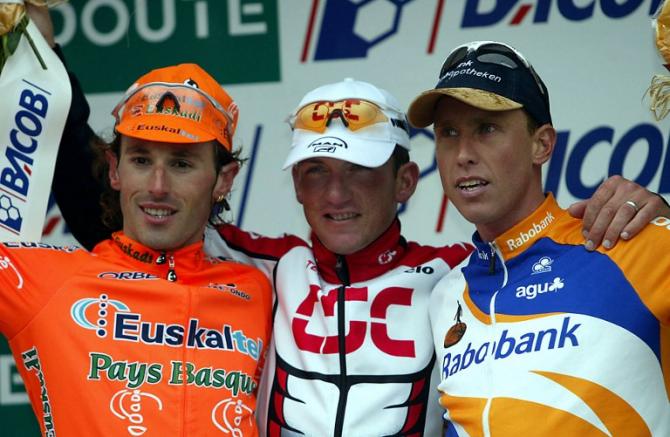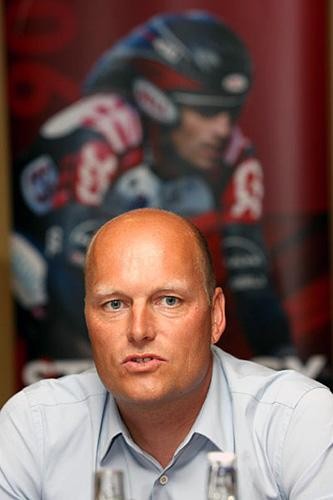Danish doping report: Riis, Team CSC and the main revelations
Danish team had "doping centre" in Luxembourg in 2000








Using testimony from former riders and members of team management, Anti-Doping Denmark’s report into doping in Danish cycling between 1998 and 2015 includes some new revelations on doping on the CSC team and also adds further detail to some of the information already made public by Jorg Jaksche, Tyler Hamilton and Michael Rasmussen.
The 97-page document confirms the doping culture that existed on the CSC team and directly implicates that former CSC manager Bjarne Riis, former directeur sportif Johnny Weltz and former managing director Alex Pedersen in violating anti-doping rules.
The most damning evidence amassed falls outside the eight-year statute of limitations, however, meaning that Riis – manager of Tinkoff-Saxo up until April of this year – and Weltz – still a directeur sportif at Cannondale-Garmin – will not face sanction from Anti-Doping Denmark.
The principal revelations are as follows.
Team "doping centre" in Luxembourg
A number of former CSC riders including Bo Hamburger testified that the team – then known as Memory Card-Jack & Jones – established a "doping centre" in Luxembourg at the apartment of an unnamed rider in 2000. Products including EPO and human growth hormone were stored in the refrigerator and were distributed primarily to the squad's Danish riders.
According to riders interviewed by the ADD study group, directeur sportif Johnny Weltz was responsible for the supply of doping products. Weltz told the study group that he had been involved in arranging the delivery of EPO and human growth hormone from a pharmacy in Andorra in 2000. He reportedly received the number of the pharmacy from former US Postal doctor Pedro Celaya.
The latest race content, interviews, features, reviews and expert buying guides, direct to your inbox!
Weltz said that the team's upper management, which did not yet include Bjarne Riis, had pushed for better results and that he felt pressured to provide doping products for the team. In their testimony, directeurs sportifs Torben Kølbæk and Alex Pedersen denied calling for organised doping on the team.
Bo Hamburger's EPO positive and Riis' request
Bjarne Riis took over as manager of the team, now called CSC, ahead of the 2001 season, signing Laurent Jalabert as team leader. When Jalabert was forced out of the Classics due to a back injury, Bo Hamburger said that Riis told him, "It's on your shoulders now and you know what it takes," which he interpreted as encouragement to dope.
On April 19, Hamburger became the first high-profile rider to fall foul of the newly-developed EPO test, though he would later escape sanction due to a negative B-sample. In his testimony, Riis denied evidence that he had admonished Hamburger for using EPO so close to a race as he was not aware that he was using EPO in the first place.
The report also includes an allegation by Hamburger that in 2000, Riis had asked him to buy EPO for Jorg Jaksche, who was then racing for Team Telekom. Jaksche corroborated the story in his evidence. Riis confirmed that he had coached both Hamburger and Jaksche in 2000, but denied that he had discussed doping with them.
The abuse of cortisone on CSC
Michael Rasmussen, Tyler Hamilton and Jorg Jaksche all testified that doctors at CSC gave riders synacthen without medical justification. Hamilton said that doctors risked being fired by the team if, for ethical or health reasons, they refused to provide cortisone injections. He added that Riis' expertise was such that he even advised doctors on when to administer cortisone and how best to do so. Jaksche said that on joining CSC in 2004, Riis told him that the team doctors would administer cortisone and synacthen to the riders, but not EPO, human growth hormone or testosterone.
In his evidence to the study group, Riis denied that there was a general abuse of cortisone on the CSC team. He said that his instructions to the team doctors were that they should follow the rules, and it was up to the doctors to decide whether there was a medical justification to administer cortisone to a rider.
Response to Michael Rasmussen's high haematocrit
When Michael Rasmussen returned a haematocrit in excess of 50% in an internal test on the eve of the 2002 Giro della Provincia di Lucca, Riis instructed that the team send him away from the race rather than risk him falling foul of a UCI-mandated blood test the following morning. Rasmussen had told Weltz that he was not at risk of failing a doping control as his last EPO injection had taken place 13 days previously.
Rasmussen said that the response to the incident proved that Riis, Weltz and a team doctor all had knowledge of his doping. Riis said that Rasmussen's elevated haematocrit was the only indication he had of his doping, and cited it as the reason that he parted company with the climber at the end of that season.
Riis denies Fuentes connection
In his testimony, Tyler Hamilton reiterated a core revelation from his 2012 autobiography, namely that Bjarne Riis had facilitated his blood doping by putting him in contact with Dr. Eufemiano Fuentes. Riis denied giving Fuentes' phone number to Hamilton and claimed that he was "shocked and afraid" when he learned that the American was blood doping under his supervision. Riis denied aiding Hamilton with blood transfusions in Monaco during the 2002 Giro d'Italia and in Paris ahead of the 2003 Tour de France. The ADD report states that Riis conceded it was had been "a big mistake" not to stop Hamilton but he "did not know how he should handle the situation."
Riis also challenged Hamilton's assertion that he had undergone three blood transfusions en route to victory at the 1996 Tour and a suggestion by Jaksche that he had blood doped between 1996-1999, instead stating that he had blood doped on one occasion during the following year's race. Riis had omitted any mention of blood transfusions both in his original 2007 doping confession and his 2012 autobiography.
Sastre's departure
An unnamed rider from CSC's 2008 roster claimed that Riis had informed Carlos Sastre that he could blood dope and avoid detection by using small blood bags, citing the 2007 Discovery Channel team as an example. The anonymous source believes that Riis' knowledge of the alleged Discovery Channel practice came from Ivan Basso, who had joined the team from CSC following his implication in Operacion Puerto.
The source said that Sastre had been angered by the apparent incitement to blood dope and that the incident had precipitated his decision to leave CSC at the end of his Tour de France-winning season and join the nascent Cervélo TestTeam.
Riis confirmed that Sastre had been upset by their conversation but said that it had been a misunderstanding rather than an instruction. The Dane said that he had observed to Sastre that it was "still possible to blood dope" but the comment was not intended as encouragement to do so, an explanation later accepted by Sastre at that year's Vuelta.
Contacted by Cyclingnews on Tuesday, Sastre denied any recollection of the conversation and said that concerns over blood doping had nothing to do with his departure from CSC.

Barry Ryan was Head of Features at Cyclingnews. He has covered professional cycling since 2010, reporting from the Tour de France, Giro d’Italia and events from Argentina to Japan. His writing has appeared in The Independent, Procycling and Cycling Plus. He is the author of The Ascent: Sean Kelly, Stephen Roche and the Rise of Irish Cycling’s Golden Generation, published by Gill Books.